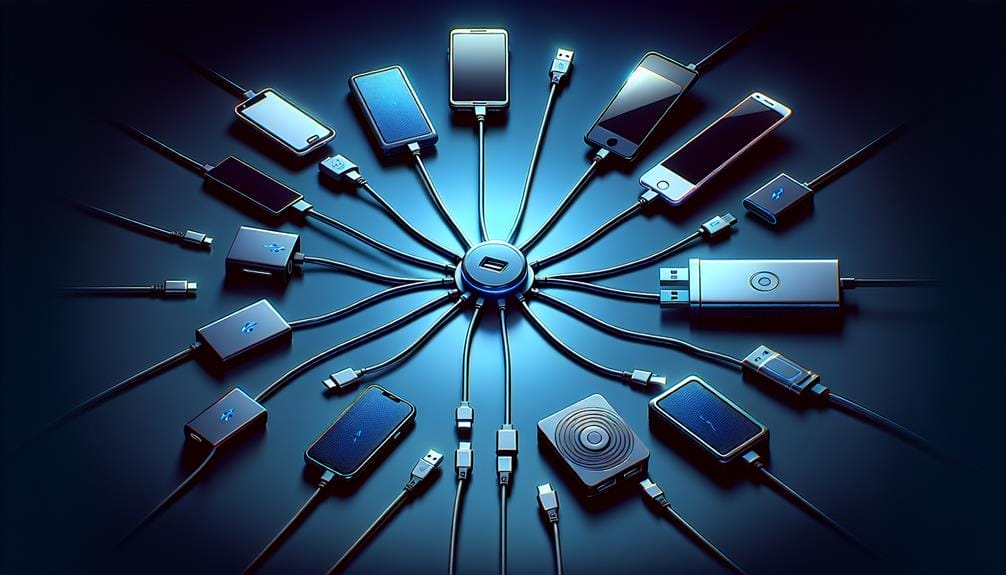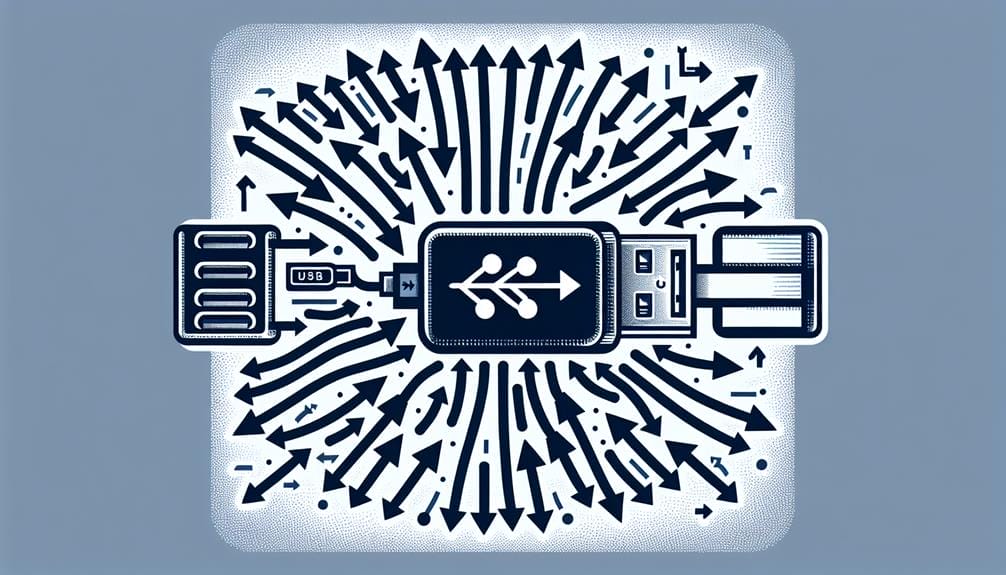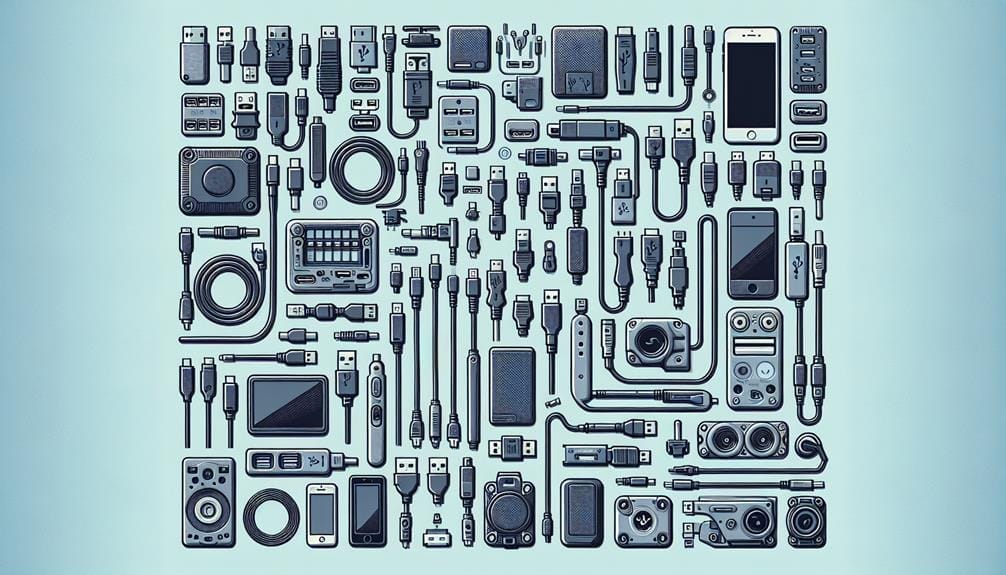Decoding USB-C and USB-3 Conundrum

The widespread adoption of USB-C and USB-3 interfaces in today’s market has undeniably added a layer of complexity for both individual consumers and businesses. Understanding the specific differences and implications of each standard is vital for making educated decisions in a world that is more connected than ever.
As technology continues to advance, understanding the nuances between USB-C and USB-3 becomes paramount for optimizing device compatibility and performance. This exploration will shed light on the intricacies of these USB standards, their practical applications, and the evolving landscape of connectivity.
Key Takeaways
- USB naming conventions and standards can be confusing, with the introduction of USB 3.0, 3.1, 3.2, and the upcoming USB 4.0.
- USB-C is becoming the main port form factor, but compatibility challenges need to be addressed for seamless integration.
- USB 3.2 Gen 11 offers enhanced data transfer speeds and is important for modern connectivity.
- USB 3.2 Gen 12 and USB4 bring advancements and improvements to USB technology, with higher speeds and compatibility.
Understanding USB Port Types

Understanding the various types of USB ports is essential for navigating the myriad of devices and accessories that utilize these connectivity options. With the increasing adoption of USB Type-C in the tech industry, it's crucial to comprehend its capabilities.
USB-C not only supports faster USB generations but also offers enhanced charging capabilities. This has led to widespread usage for charging modern smart devices. Additionally, its compatibility with USB 3.0 or faster makes it suitable for external docking stations and SSDs.
The symmetric form factor of Type-C also allows for easy insertion in any direction, adding to its appeal.
As the tech industry continues to embrace USB-C, understanding its charging capabilities and versatility becomes increasingly important for consumers and businesses alike.
Differentiating USB-C and USB 3
As the tech industry increasingly embraces USB Type-C for its enhanced charging capabilities and compatibility with faster USB generations, it becomes imperative to discern the distinctions between USB-C and USB 3.
- USB-C supports faster USB generations (3.2 Gen1x2, 3.2 Gen2x2) and is in development for USB gen 4.0.
- USB-A supports slower USB generations (1.0, 2.0, 3.0, resp. 3.2 Gen 12).
USB Type-C is commonly used for charging modern smart devices and supports USB 3.0 or faster, making it suitable for external docking stations and SSDs.
USB-C's symmetric form factor allows for easy insertion in any direction.
USB 3.0, 3.1, and 3.2 have been renamed to USB 3.2 Gen 11, USB 3.2 Gen 12, and USB 3.2 Gen 22, which can cause confusion.
In terms of data transfer, USB-C generally offers faster speeds than USB 3, while for charging capabilities, USB-C is more versatile and efficient.
USB-C Capabilities and Support

The versatility and high-speed capabilities of USB-C make it a preferred choice for modern devices and peripherals. USB-C supports fast charging, with the capability to deliver up to 100W of power, making it suitable for charging a wide range of devices, including laptops and smartphones.
Additionally, USB-C facilitates high-speed data transfer, with USB 3.2 Gen 2×2 supporting speeds of up to 20Gbps, enhancing the efficiency of external docking stations, SSDs, and other peripherals.
Its symmetrical design allows for easy insertion, eliminating the need to orient the connector in a specific direction.
As modern devices increasingly adopt USB-C, its charging capabilities and data transfer speeds are essential features that cater to the demands of today's technology-driven world.
Impacts of USB Type-C on Devices
The integration of USB Type-C technology has significantly transformed the functionality and connectivity options of modern devices. This has been particularly evident through the following impacts:
- Advantages of USB-C for charging, providing faster charging capabilities and compatibility with various devices.
- Increased adoption of USB-C in the tech industry, leading to a broader range of devices utilizing this technology.
- Enhanced data transfer speeds, enabling quicker file transfers and smoother overall user experience.
- Improved versatility, as USB-C ports can be used for a wide range of functions such as video output, data transfer, and charging.
- Streamlined design of devices, with manufacturers being able to create slimmer and more versatile products due to the smaller size and reversible nature of USB-C ports.
Apple's Transition to USB-C

Gradually transitioning to USB-C, Apple is expanding its compatibility with modern devices and charging technology.
The adoption timeline for USB-C in Apple devices began with the introduction of USB-C in the MacBook in 2015, followed by the iPad Pro and the MacBook Pro.
The benefits of USB-C for Apple devices are significant. USB-C allows for faster charging, data transfer, and the ability to connect to a variety of peripherals through a single port. This transition has resulted in a streamlined user experience and a reduction in the number of different cables and adapters needed for Apple devices.
Additionally, USB-C enables Apple devices to be compatible with a wider range of third-party accessories and peripherals, providing users with more flexibility and convenience.
The Rise of USB4
A harbinger of enhanced connectivity and speed in the realm of data transmission, USB4 represents the next evolutionary leap in the USB standard. Its implications for future devices and the benefits of USB Type-C standardization are significant. Consider the following:
- USB4 offers a maximum speed of 40Gbps, doubling that of USB 3.2.
- It supports multiple data and display protocols through a single USB Type-C cable.
- USB4 enhances compatibility and interoperability between various devices and platforms.
- The USB4 architecture is based on Thunderbolt, providing improved performance and connectivity options.
- USB4's arrival is expected to streamline the user experience and drive the adoption of USB Type-C across a wide range of devices.
The rise of USB4 is poised to bring about substantial advancements in data transfer speeds and device connectivity, further solidifying the USB Type-C standard.
USB4 and USB-C Compatibility

Introducing a new era of seamless connectivity and enhanced compatibility, USB4 and USB-C exhibit a harmonious relationship, ensuring optimal performance across a spectrum of devices and platforms.
USB4, the latest version of the USB standard, standardizes Type-C as the main port form factor. This advancement marks a significant step in the future of USB-C technology, as it brings improved compatibility and speeds.
Additionally, USB4 also integrates Thunderbolt 3 technology, which further enhances the capabilities of USB-C. With Thunderbolt compatibility, USB4 and USB-C enable high-speed data transfer, display connectivity, and power delivery, offering a versatile solution for various devices.
The alignment of USB4 with USB-C underscores the commitment to a unified and efficient connectivity standard, promising a promising future for USB-C technology.
USB-C's Growing Role in Connectivity
The alignment of USB4 with USB-C underscores a significant advancement in connectivity, highlighting the expanding role of USB-C in facilitating seamless and high-speed data transfer, display connectivity, and power delivery across diverse devices and platforms.
USB-C's impact on data transfer speeds is significant, supporting faster USB generations such as 3.2 Gen1x2, 3.2 Gen2x2, and in development for USB gen 4.0.
Its role in universal connectivity is evident as it is commonly used for charging modern smart devices, supporting USB 3.0 or faster, and being suitable for external docking stations and SSDs.
The symmetric form factor of USB-C allows for easy insertion in any direction, enhancing user experience.
USB-C's universal compatibility and high-speed data transfer capabilities make it an essential component in modern connectivity solutions.
USB4 standardizing Type-C as the main port form factor further solidifies USB-C's growing importance in the connectivity landscape.
Navigating USB Naming Conventions

Understanding the intricate nuances of USB naming conventions can be pivotal in navigating the complexities of modern connectivity standards. With the rapid evolution of USB technology, it's essential to address USB-C compatibility challenges and anticipate the future of USB-C technology.
The transition from USB 3.0, 3.1, and 3.2 to USB 3.2 Gen 11, USB 3.2 Gen 12, and USB 3.2 Gen 22 has led to confusion among consumers. However, the future of USB-C technology appears promising, with the development of USB 4.0 on the horizon.
The USB4 standard further solidifies Type-C as the main port form factor, indicating a clear direction for the usage and proliferation of USB-C in the future. As such, keeping abreast of these naming conventions is crucial for both consumers and manufacturers in ensuring seamless compatibility and integration.
Conclusion
In conclusion, the distinctions between USB-C and USB-3 are essential for navigating the complexities of modern connectivity. USB-C offers faster speeds and versatile connectivity options, impacting the design and functionality of devices.
As technology continues to evolve, USB4 is on the rise, bringing even greater capabilities and compatibility. Understanding these USB standards is crucial for making informed decisions in the ever-changing landscape of connectivity.

